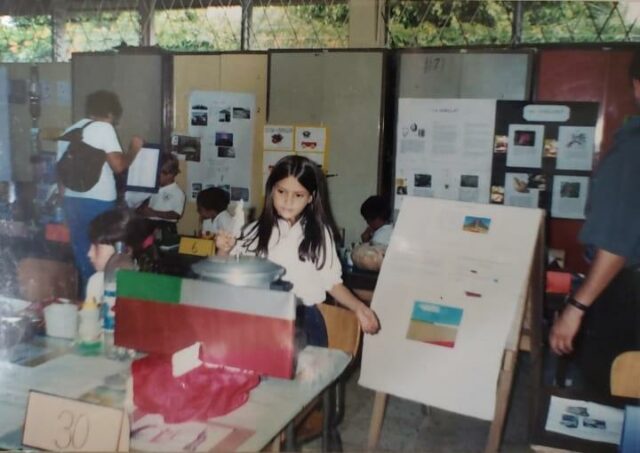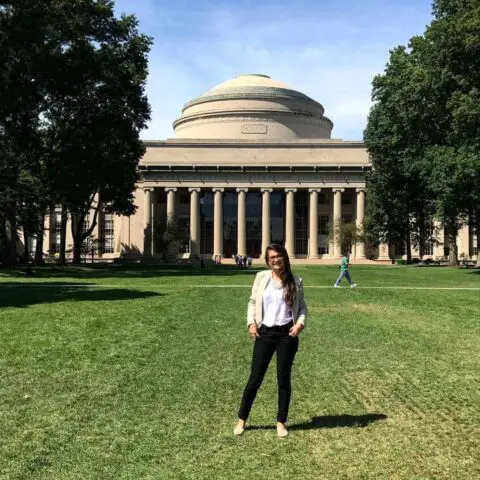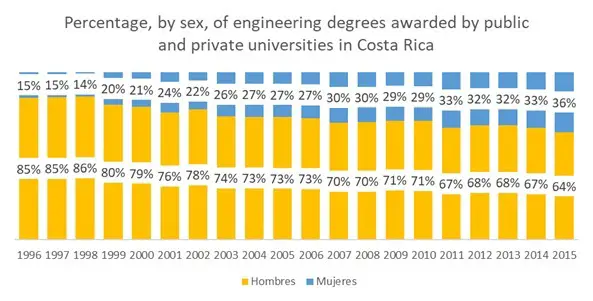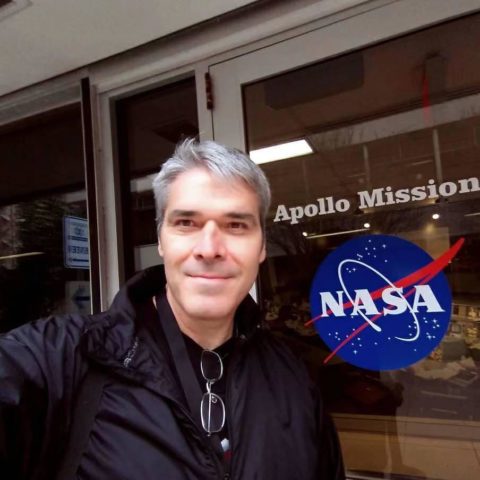My guest blogger this week is Costa Rican biomedical engineer/ business consultant Andrea Jimenez. As Andrea awaits a long anticipated NASA internship, she shares an inspiring story of hope and opportunity for the Costa Rican economy.

This story begins in Montenegro, Guanacaste, Costa Rica in a house that was lit at night with candles. My house was full of colors, animals and textures, the best environment to spark a little girl’s imagination. But, believe it or not, magic did not happen during the day, but at night. When the mosquitoes did not force us to run home for shelter, we could see the sky for many hours uninterrupted because of the absence of light for miles around us. Our nights observing space were undoubtedly the most impressive of my childhood. Living in a world that perhaps can only be described by Gabriel García Márquez was definitely the initiation of my biggest passion: science and engineering.
One night, for the first time we observed the international space station pass above our heads and that weird and imaginative little girl placed her heart in the cosmos.
Believing that there are people who can travel to space, understanding the power of space technology and the technological instruments that we use in our lives combined with dreaming of being part of some of these developments, is what has inspired many scientists, mathematicians, engineers and technologists. I am a biomedical engineer, a profession that could be considered far from the space industry. However, every step I have taken has been leading me to a greater goal; to create devices that will allow humans to live beyond our planet in a sustainable way, faithfully understanding that all inventions developed to work in space can benefit people on Earth greatly.
It is space that gives thousands of girls that dream, of being astronauts or engineers, of being great scientists and exploring other planets. It is space that provides us the spark that makes us lose our fear of the unknown and science. In the end that dream does not lead us all to work on space missions. Some decide to work on smart bras that prevent breast cancer, on mathematical models to create algorithms, on businesses and entrepreneurship, on learning about and saving the oceans, on antiviral serums, on creating the necessary software to store the census data of a whole country and so many other branches.
A couple of years ago, I was invited to do an internship at NASA. Unfortunately, I could not go because my country does not have an internship agreement with NASA called an (i2) and since NASA is a governmental agency, it is extremely difficult for a foreigner to be able to do research internships. I can tell you without a doubt that it was one of the saddest moments in my professional career and I, the girl who dreamed of being a scientist, decided to temporarily put that dream aside until I had the necessary inspiration to try again.

NASA’s Earth Sciences Division Deputy Director Sandra Cauffman knows very well the importance of aerospace science for Costa Rican children and she has inspired many women in this country including me. A few months ago teacher Bruce Callow mentioned to me the hard work Mrs. Cauffman had done to establish an internship agreement between Costa Rica and NASA. Mrs. Cauffman has in her hands the i2 agreement ready to be signed by the Government of Costa Rica. She has been holding this agreement without a signature from the Costa Rican side for more than 5 years now.
This internship agreement would allow Costa Rican students to do internships at NASA and it will be the gateway to inspiration for thousands of future engineers and scientists. Therefore, we decided to follow up on the agreement in an attempt to find a legal mechanism so that it can be signed by Costa Rica. Dr. Adolfo Chaves, coordinator of TEC’s Space Systems Laboratory, informed us about the legislation that seeks the creation of the Costa Rican Space Agency.
Today Costa Rica has two extremely powerful instruments at its fingertips; The i2 agreement, which will allow Costa Rican students to undertake internships at NASA and the possibility of having its own space agency. As I told you before, there is a power of inspiration in space that I can guarantee you is one of the strongest in the world of science. Although I consider that the inspiration, dreams, and the power of education for the future of the girls and boys of the country is the most important thing, numbers can validate the importance in a more analytical way. That is why I leave you a small compilation of important data below.
The market value of the aerospace industry is expected to reach 1.4 trillion dollars by 2030. Can you imagine what it would mean for the Costa Rican economy to have an aerospace cluster of that magnitude? Having the professionals and state mechanisms for Costa Rica to present itself as an investment country in the industry is to be part of the economic development of the future. Just as we presented ourselves a few years ago as a country capable of attracting investment from the medical industry (with a market value of approximately 457 billion dollars) and that currently represents more than 6.3% of the country’s GDP and generates more than 8% of the employment, we could also generate and diversify the sources of work in Costa Rica using the agreement and the space agency as levers.

The trend since the 90’s is the growth of the study of engineering careers. We know that there are many reasons why students have decided to study this branch, but I would like to share a little information. Costa Rican born Franklin Chang-Díaz’s first mission as an astronaut was in 1986. The most marked growth trend in engineering studies began in 1999. 13 years later, all those children who were marked by that historical fact in science and engineering in Costa Rica may have a direct influence and correlation in the increase of engineering degrees.

When did Sandra Cauffman start science, engineering and technology diffusion and promotion in Costa Rica? She tells us that “Probably since 1998 when I returned to Costa Rica for the first time after my departure.” Starting in 1999, the average number of women in engineering began to grow. Today, women in engineering are still a smaller percentage. If we saw more influential scientists in the aerospace industry, would the number of female engineering graduates increase? I believe it would.
To understand the correlation between engineering students and the inspiration that a Costa Rican might have been in the space industry and to know people’s perception of the matter, I did a survey in which 214 people participated, of which the distribution of those who answered it was 57% men, 43% women and 0% other. Of this percentage, 74% have studied a career in engineering, science, mathematics, or technology. This is how the questions and answers are distributed:
Has a Costa Rican in the space industry (eg: NASA) inspired your life in any way?

Do you think that if Costa Rican students could do internships in space agencies or centers (eg: NASA) it would bring any benefit to the country (science, development, others)?

Do you think the space industry can bring economic benefits to Costa Rica?

Analyzing part of the data, facts and history, I consider that diversifying industry, enabling tools that promote science, technology, education and the opening of possibilities, is good for individuals, the economy, and the global positioning of the country. We have mechanisms to achieve this, but more importantly, we have the human talent. We were one of the first countries in the world to have electric light, we have been pioneers in sustainability, in the development of antivenom, among many other things. It’s about time we become the first world country that we truly have the potential to be.

Bruce Callow is a Canadian teacher and co-author of the book To the Stars: Costa Rica in NASA. He does space education outreach work on behalf of NASA.

